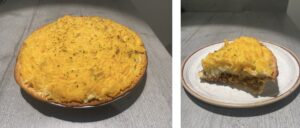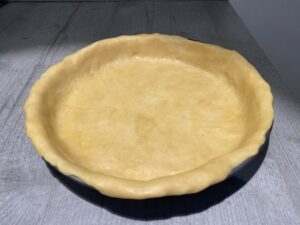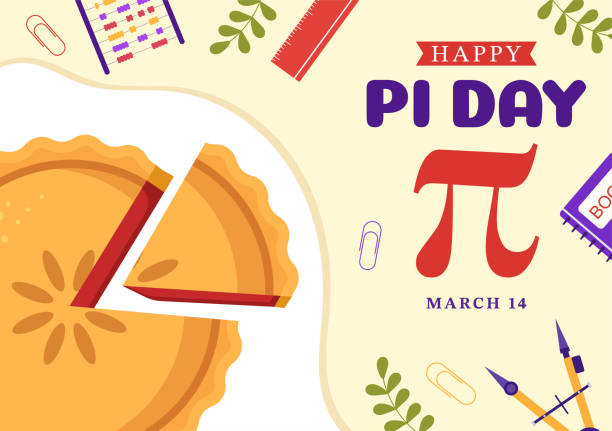Every year on March 14th, mathematicians and enthusiasts around the world come together to celebrate Pi Day, honouring the mathematical constant π. This irrational number, approximately equal to 3.14159 and the ratio between a circle’s circumference and diameter, has a fascinating history and plays a crucial role in both mathematics and physics.
The concept of pi has ancient roots, with early civilizations such as the Babylonians and Egyptians approximating its value. However, it was the ancient Greek mathematician Archimedes who made significant contributions to understanding pi’s nature. Archimedes used polygons to approximate the value of pi, laying the foundation for future mathematicians to refine and expand upon his work.
In the 17th century, mathematicians like John Wallis and James Gregory made strides in developing infinite series to represent pi more accurately. Later, in the 18th and 19th centuries, mathematicians like Leonhard Euler and Carl Friedrich Gauss contributed to the ongoing quest for precision in calculating pi. In fact, it was because of Euler’s 1736 Mechanica that the usage of the Greek letter “π” was formalized.
Pi’s significance extends beyond its use in geometry and trigonometry. It appears in various mathematical formulas and has applications in physics, engineering, and other scientific disciplines. In physics, it frequently emerges in equations related to waves, oscillations, and probability. It plays a crucial role in calculus, where it appears in formulas for areas and volumes of certain shapes. Its ubiquity demonstrates the interconnectedness of mathematical concepts and their real-world applications.
While pi has been the traditional symbol for the ratio of a circle’s circumference to its diameter, some mathematicians argue for an alternative constant, tau (τ). Tau is defined as twice the value of pi (τ = 2π), emphasizing the relationship between a circle’s circumference and its radius.
Advocates for tau argue that using it simplifies various mathematical formulas, reducing the number of twos and making certain equations more elegant. Proponents believe that tau provides a clearer and more intuitive understanding of circular relationships.
However, the debate between pi and tau remains ongoing, and both constants have their merits. Traditionalists argue for the historical significance and familiarity of pi, while tau enthusiasts champion its conceptual clarity and simplicity in mathematical expressions.
As we celebrate Pi Day, we reflect on the rich history of this mathematical constant and its pervasive influence on various branches of mathematics and physics. Whether you stand by pi or lean towards tau, the ongoing debate adds an exciting dimension to the celebration of this fascinating and fundamental mathematical concept. To add to the celebrations, we at the School of Physics & Astronomy have put three pie recipes below for your personal enjoyment. Our personal favourite is the Kentucky Derby Pie! So, whether you’re enjoying a slice of pie or engaging in mathematical discourse, Pi Day provides an opportunity to appreciate the beauty and significance of pi in our mathematical universe.
Haggis Pie
Our first recipe is for a traditional Scottish Haggis Pie. For the pastry you will need:
600g plain flour plus more to dust
250g cold butter cubes
1 large egg lightly beaten
1/2 teaspoon salt
Ice-cold water as needed (about 60g)
For the filling you will need:
26.6g olive oil
1 large onion finely diced
2 cloves garlic minced
500g crumbled haggis
250ml hot beef stock
28.2g tomato paste
2 tsp Worcestershire sauce
For the topping you will need:
750g potatoes peeled and cubed
1 large swede turnip, peeled and cubed
57g unsalted butter divided
Whole milk as needed
Salt and pepper to season
Instructions:
1. Make the filling. Heat the oil in a large pan and sauté the onion over low heat for 5 minutes until softened.
2. Add the garlic and continue to cook for a further two minutes.
3. Add the crumbled haggis and stir to combine.
4. Stir in the stock, tomato paste, Worcestershire sauce and flour. Bring to a simmer and cook for 15 minutes.
5. Taste the filling and season with salt and pepper to taste. Cool the filling before using.
6. Make the topping. Boil the potatoes and swede, in two separate pots, until fork tender. The swede will need boiling for a lot longer than the potatoes.
7. Mash the potatoes with 25g of butter and enough whole milk to create a smooth mash. Reserve 50g of mash to mix in with the swede mash. Season with salt and pepper, to taste.
8. Mash the swede with 25g of butter and a little whole milk to create a smooth mash. Stir in some of the potato mash and mix together. Season with salt and pepper, to taste.
9. Make the pastry. Put the flour and butter in a food processor fitted with a metal blade and pulse until the mixture resembles breadcrumbs.
10. Add the beaten egg and pulse again.
11. Add some ice-cold water through the feeding tube, a tablespoon at a time, until the dough forms clumps around the blade.
12. Tip the dough onto plastic wrap. Knead gently and bring together to form a disk. Wrap it and chill for 30 minutes.
13. Divide the dough in half, keeping any dough you are not using wrapped and chilled.
14. Dust your worktop with a little flour and roll out the dough to the thickness of a pound coin (~3mm).
15. Roll the pastry over with a rolling pin and put inside a 6 inch cake or tart tin, scoring the base with a fork (if you only have a large pie tin like I do, it works just as well).
16. Repeat the process to line two more tins. Chill all three in the freezer for 20 mins.
17. Preheat the oven to 220°C. Place baking paper over the pastry and weigh it down with ceramic baking beans or rice.
18. Blind bake the pie bases for 20 minutes, then remove the weights and bake for a further five minutes until golden.
19. Fill the pastry 3/4 of the way with the cooled haggis.
20. Pipe or spoon the mash over the pies – alternating the potato with the swede. Place the pies on a heavy baking tray.
21. Reduce the oven temperature to 180°C. Brush the pies with a little melted butter and sprinkle with the parsley if desired.
22. Cook for 30 minutes, until the pies are hot and the mash is lightly coloured. Allow them to cool.

Mixed Berry Pie
Our next recipe is for a mixed berry pie. For the crust you will need:
350g plain flour
250g butter diced
140g icing sugar
100g ground almonds
Zest 1 orange
1 large egg yolk (keep the egg white)
For the filling you will need:
750g mix of berries (cherries, blueberries, blackcurrants, redcurrants, blackberries, raspberries, etc.)
16g icing sugar
19g cornflour
Squeeze of orange juice
Instructions:
1. (For the crust) Put the flour, butter, icing sugar, ground almonds, and zest in a food processor and whizz to crumbs
2. Mix the yolk with 15g cold water, then add to the processor and pulse until the dough comes together.
3. Split the pastry in half, wrap in cling film, then chill for 30 mins.
4. Heat oven to 190°C. Line an 8 inch pie dish with half the pastry, add a sheet of greaseproof paper and baking beans and bake blind for 30 mins.

5. Remove the paper and beans.
6. (For the filling) Mix the berries, icing sugar, cornflour, and a squeeze of orange juice in a bowl. Then pile into the pie base.
7. Whisk the egg white with a fork, then brush a little around the pastry rim.
8. Roll out the remaining pastry until big enough to cover the pie with a slight overlap. Carefully lift on the pastry lid, trim the edges and press with fork prongs to seal.
9. Using a knife, make five incisions in the top crust. It should resemble a five-pronged star
10. Brush all over with more egg white, then sprinkle generously with granulated sugar. Bake for 30 mins until golden. Allow the pie to cool for a few mins before serving.
Kentucky Derby Pie
Our final recipe is for a Kentucky Derby Pie. For the crust you will need:
375g all-purpose flour
1 teaspoon salt
25g sugar
255g unsalted butter chilled and cut into cubes
30g amaretto
30.4g cold milk
For the filling you will need:
220g brown sugar
42g flour
3 large eggs
115g melted butter
60g bourbon whiskey
2 teaspoons vanilla extract
1 teaspoon salt
284g dark chocolate chips
100g roughly chopped pecans or walnuts
Instructions:
1. (For the crust) Place the flour, salt, and sugar in a food processor. Pulse a few times to mix. Add the cold butter and pulse until the mixture resembles peas.
2. Add the amaretto and cold milk. Pulse again until the dough comes together.
3. Dump the dough out onto a sheet of plastic wrap. Wrap and refrigerate for at least 30 minutes.
4. Preheat the oven to 175°C. Roll the pie crust into a circle, 3 inches wider than your pan pie, usually 12 inches to fit a 9 inch pan. Carefully move the pie crust to the pan and fit it down into the bottom. Crimp the edges. Refrigerate the crust while making the filling.
5. (For the filling) In a large bowl, whisk the brown sugar, flour, eggs, butter, bourbon, vanilla, and salt. Stir in the chocolate chips and chopped pecans.
6. Once the pie crust is very cold, pour the filling into the crust and set in the oven on the lowest rack. Bake until the centre is firm, and the top is golden, about 45 minutes. Cool completely before serving.

Useful Links
School of Physics and Astronomy news:
https://www.ph.ed.ac.uk/news
Nucleus building at KB:
https://www.ed.ac.uk/science-engineering/about/nucleus
(Photo by iStockPhoto)
(Haggis Pie recipe adapted from SuperGolden Bakes: https://www.supergoldenbakes.com/haggis-neeps-tatties-pie-scottish-recipe/)
(Mixed Berry Pie recipe adapted from BBC Good Food: https://www.bbcgoodfood.com/recipes/summer-berry-pie)
(Kentucky Derby Pie recipe adapted from A Spicy Perspective: https://www.aspicyperspective.com/bourbon-derby-pie-salted-caramel-whipped-cream/)



